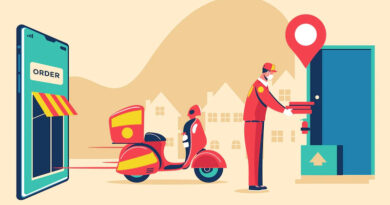What Role Does the Design of a Website Play in the User Experience?
Websites have become gateways for users to discover information, interact and find information. With so many websites with similar content, the user experience is one of the most important aspects of any website.
It does not matter how much time users spend on your site if they cannot remember it or they find it difficult to use. The users will not return. Website user experience is like how you would react to a hotel or restaurant that had poor customer service.
Research shows that about 44% of users would share their bad website experience with those close to them. Today, users experience.
Today, most businesses rely on their websites to help them increase their reach. Websites are now both branding tools and play a crucial role in digital marketing.
Creating a user-friendly experience is one of the highest-performance digital marketing strategies. It will help you gain more leads, build trust with your target audience and increase your search engine rankings.
User Experience Design
User experience design (UX) involves creating a product in a meaningful and relevant way for the intended user. The design process covers aspects like branding, design, creating functionality, and enhancing usability.
Therefore, it is wise to note that user experience design is not limited to just websites. UX design focuses on the user, and aims at catering to their habits, motivation, need, emotions, and behavior. Its main target is the user’s feelings and how best to accomplish a task.
Essentially, website UX design focuses on how easy it is for a user to navigate your site. This ease of browsing will determine how likely they are to return and explore other pages within your website.
If users struggle to understand what they are looking at, they are less likely to want to come back again. Therefore, a good UX for your website will guarantee more usability. It will also increase conversions and increase the ROI of UX design.
Therefore, you must ask yourself several user-testing questions before designing any new website. This will enable you to create your website with usability in mind from the very beginning.
Web Design
Web design is the process of planning, creating, and presenting content on the internet. The design process includes creating the layout and graphics and producing content for the website. Web designers depend on various frontend and backend technologies to achieve this presentation.
Web design is technical, and most businesses rely on web design agencies to develop their website for them. Thus, it is common to see businesses looking for a website design nyc or their local area to create and design their websites. Some firms even take things further by offering digital marketing, which can help grow your website and align it with your brand.
Web designers think about infographics, navigation, menus, typography, tables, and diagrams in their processes. They also have to factor in the UX design aspects that fall into the design.
Using Web Design to enhance User Experience
Since user experience and the website design are linked, you cannot think of one without considering the other. Let us look at how to use web design to enhance the user experience.
- Improve Your Website Loading Time
Users will only wait for about four seconds before they get annoyed with the loading speed of a website. Users expect websites to load content in 2 seconds or less. This is because we have faster internet and better devices.
You can improve your platform loading time by
- Reducing the number and size of JavaScript and CSS files.
- Using a CDN (Content Delivery Network) – This is setting up servers with cache data all around the world.
- Optimizing your image by using compression or reducing resolution and dimension.
- User browser HTTP caching.
- Reducing the number of external scripts in use.
You also have to run regular speed tests on your website. This will help you ensure your website is performing at its optimal conditions. It will also ensure consistency.
- Capture User Attention
The visual aspect of your website design plays a crucial role in the user experience. Your website creates a first impression; much like in real life. Therefore, you need to create a great first impression since it is common for users to lose trust in a website because it does not look credible.
Invest in creating a visual spectacle by using suitable typography, your brand palette, catchy banners, and necessary additional elements like infographics. You can also include animations and give visual cues to users to keep them alert and entertained. This will help your website look the part it is supposed to play.
Make sure you use your landing page to get and maintain user attention. The more enticing it is, the better your chances of making a conversion.
- Support User Patterns
Your custom web design has to be functional and take user patterns into account. Web users have generally gotten used to certain patterns that make their browsing experience fast and pleasant. Some of the shortcuts users expect in browsers include
- The business logo placed in the navigation bar takes users to the homepage when clicked.
- Website breadcrumb trail that shows the user the hierarchy of their navigation.
- Website functionality, without logging in or signing up.
- Auto-correction and auto-suggestions during searches
Since most websites have this mechanism in place, most users will perform these actions. If your website fails to meet their expectation, they can perceive it as difficult to use or as a bad experience.
- Uniform experience
Your users need a uniform experience across devices. This falls on the design aspect of the website such that if a user visits your website on mobile, pc, or console, they get the same experience. This necessitates designing with the end device in mind.
Most designers forget about mobile phone users and as a result, most websites do not perform well on mobile. This is a shame, considering most of their traffic may be from mobile phones.
It may be wiser to design a mobile version of your website, rather than trying to make your desktop functional for both. This will allow you to meet the needs of mobile users and include things such as “hamburger menus” that would otherwise look odd on desktops.
Conclusion
How your users react to your website depends on the experience they get when they interact with it. Invest in having a good user experience. However, your UX is not independent, it goes hand in hand with the website design.
You need to build your website with experience in mind. As you design your website, consider all the different changes you can make to improve the user experience



